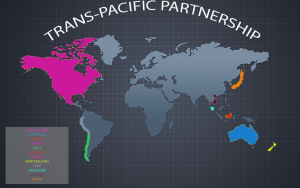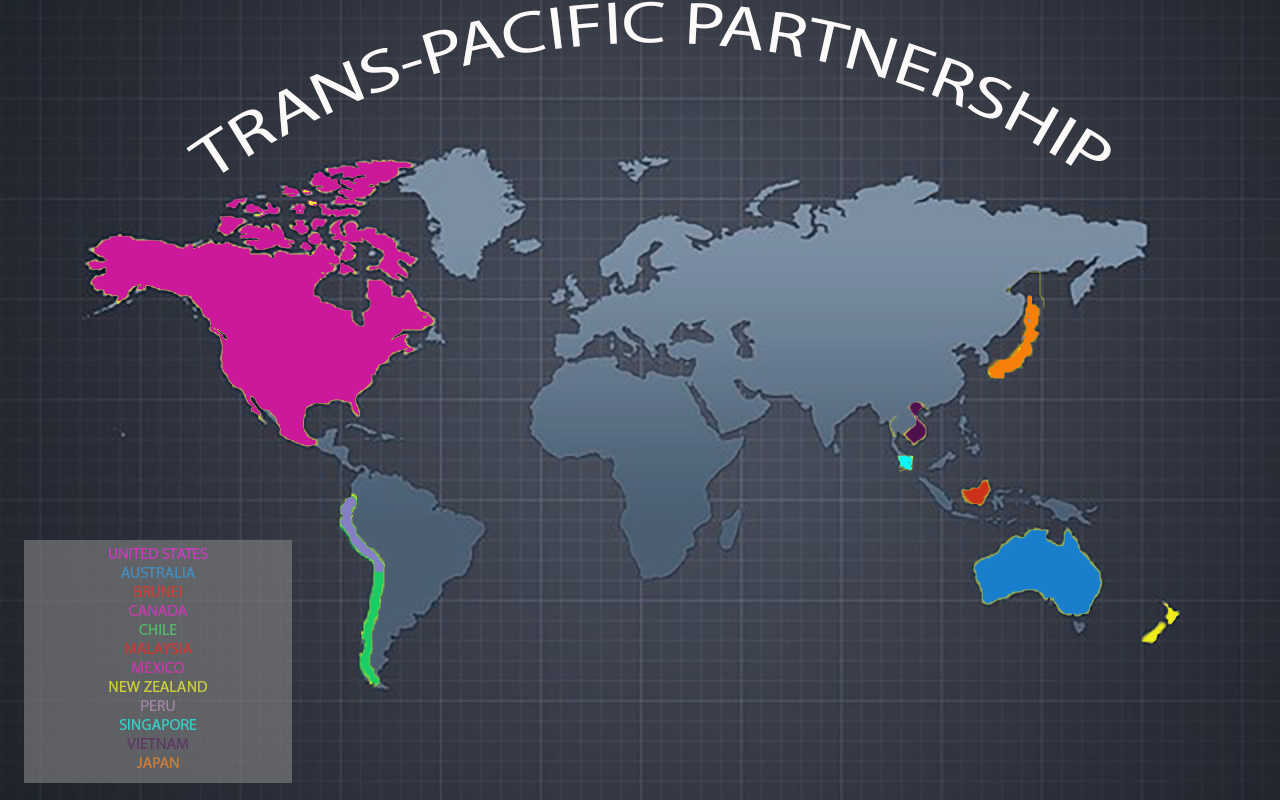Trans-Pacific Partnership represents more than a simple trade agreement

Encompassing 40 percent of the world’s economy, the Trans-Pacific Partnership (TPP) has connected 12 countries in an ocean of controversy.
At face value, the TPP functions as a 6,000-plus page trade agreement amongst Australia, Brunei, Canada, Chile, Japan, Malaysia, Mexico, New Zealand, Peru, Singapore, the United States and Vietnam.
However, below the surface, the TPP not only deals with matters of trade and tariffs, but also investor-state disputes and intellectual property.
Why so complex?
Heralded as the largest trade deal in over two decades, the TPP consists of multiple compound issues symbolizing the “kill multiple birds with one stone” mentality. Having been negotiated behind closed doors for over five years, the deal’s full text was released to the public in early November.
Agreed upon by the 12 participating countries in early October, the TPP is now on a “fast track” to congress. The deal’s full text was released to the public in early November.
With President Barack Obama being granted a swift up or down vote by congress, the TPP will not be open to amendments or filibusters. This, in turn, has sparked heated debates between supporters and opponents from both sides of the aisle.
Sen. Elizabeth Warren, D-Mass., and presidential nominee, Donald Trump (R), are among the many outspoken political leaders against the TPP.
The arguments against the TPP center around the potential for job losses and businesses taking advantage of workers in developing TPP countries.
“Every source that one can have access to will say that this is a bad deal, and I agree,” said Andy Robb, environmental science major. “Not a lot of people can tell you the direct benefits of the TPP, and it poses a big threat to food safety standards, environmental protections, labor laws and Internet privacy.”
Supporters of the multilateral agreement, including presidential candidate Gov. John Kasich, R-Ohio, see an area of growth within exporting Made-in-America goods and having a stronger influence in Asia.
“Being a follower of Adam Smith, I philosophically favor free trade agreements,” said Dale Cloninger, economics professor emeritus. “However, many such pacts contain many ifs, ands, ors and buts.”
Sugar, spice and everything high priced
The TPP’s stated goal is ultimately to reduce tariffs on thousands of products and services to zero.
“It is a good thing that the reduction will be taking place slowly because it allows firms in the negotiating countries to either ramp up or ramp down their domestic enterprises in an organized manner,” said Robert Hodgin, associate professor of economics.
While this reduction is being sold as a major benefit to the U.S. economy, some are concerned aspects of the deal could harm certain groups.
“The most discouraging feature of the agreement is the failure to significantly reduce sugar import restrictions,” Cloninger said. “Currently, the price of sugar in the USA is several times the world price because of these restrictions.”
In turn, Cloninger said, these restrictions have “aided and abetted” the rise of artificial sweeteners.
ISDS potentially spurring bad blood
One of the provisions within the TPP centers on the Investor-State Dispute Settlement (ISDS). Through the arbitration process, foreign investors can seek out compensation from TPP countries in the form of a financial penalty. This has sparked a debate in regards to how ISDS could potentially work in favor of larger businesses.
“By giving foreign corporations special rights to challenge U.S. laws outside of our legal system, ISDS undermines U.S. sovereignty and tilts the playing field further in favor of big multinational corporations,” said Warren in a May 18 press release.
However, supporters of ISDS within the TPP have combatted the opposition by pointing out the arbitration procedure could work to strengthen environmental and labor standards in TPP countries.
To restrict, or not to restrict
Under the TPP agreement, all intellectual property (IP), from pharmaceuticals to music, is seemingly protected from IP infringement.
However, opponents argue the IP provisions within TPP will make it more strenuous on innovators to benefit from exporting their creations.
An example of this would be generic drug producers being restricted from entering the marketplace. Doing so is said to keep certain larger drug manufactures from lowering their prices, which in turn could potentially make it difficult for developing TPP countries to gain access to less-expensive pharmaceuticals.
While the TPP agreement is meant to be a combative force against counterfeiting and piracy, some opponents are concerned about the legal ramifications of seemingly minor offenses.
For example, if someone were to upload a clip from a movie or utilize a song in a video, which is not of his or her invention, the copyright violator could face jail time.
A congressional vote is coming
Congress is currently in a 90-day review period with an expected vote on the TPP in early 2016.
“There are many pros and cons, so taking a side is not easy and requires more research in the patterns of trade and previous successes of such agreements,” said Sandy Samaan, biology major.

